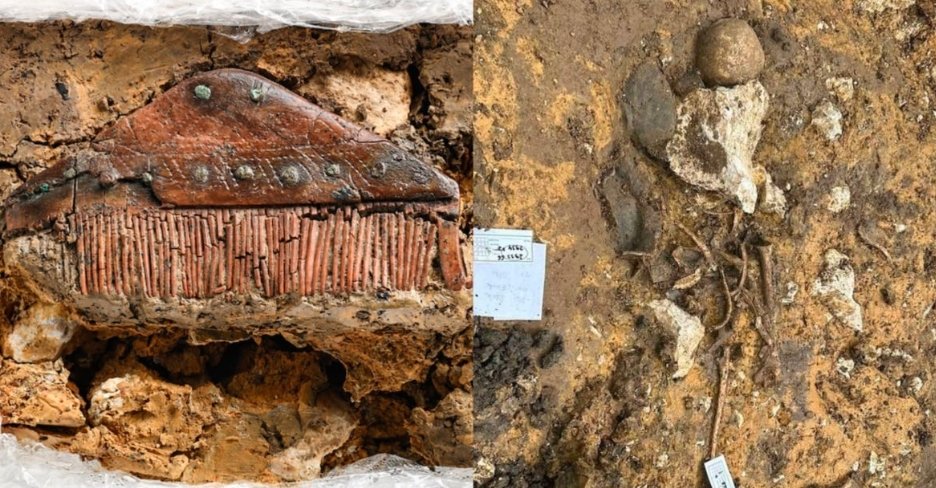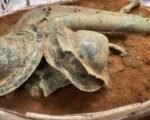In a stunning archaeological discovery, a 1,700-year-old Alemannic tomb has been unearthed in Gerstetten, Germany. The tomb, dating back to the 4th century C.E., contained a variety of grave goods, including ceramics, glass vessels, and a remarkably well-preserved comb. This find offers a rare glimpse into the burial practices and daily life of the Alemanni, a confederation of Germanic tribes. The artifacts are currently being studied by the State Office for Monument Preservation in the Stuttgart Regional Council.
Discovery of the Alemannic Tomb
The discovery of the Alemannic tomb in Gerstetten was a result of a routine excavation ahead of a new housing development. Workers stumbled upon the wooden grave chamber, which contained the skeletal remains of a 60-year-old man. The tomb’s construction was elaborate, indicating the high status of the individual buried within. The grave goods found alongside the remains included ceramics, glass vessels, and a small comb, all remarkably well-preserved despite their age.
The comb, in particular, has garnered significant attention due to its intact condition. Made from bone, it still has all its teeth, providing valuable insights into the craftsmanship and daily grooming practices of the Alemanni. The presence of such items in the tomb highlights the importance of personal grooming and the symbolic value of grave goods in Alemannic culture.

Archaeologists believe that the tomb’s location and construction suggest it was intended for a prominent member of the community. The discovery has sparked interest in further excavations in the area, as it is believed that more graves may be found nearby.
Significance of the Grave Goods
The grave goods found in the Alemannic tomb offer a fascinating glimpse into the material culture of the time. The ceramics and glass vessels are indicative of the trade networks that existed between the Alemanni and neighboring regions. The high-quality glass cup found in the tomb is believed to have originated from the nearby Roman fort of Guntia (Günzburg), highlighting the close ties between the Alemanni and the Roman Empire.
The comb, with its intricate design and intact teeth, is a rare find that sheds light on the daily life and personal grooming habits of the Alemanni. Such items were not only functional but also held symbolic significance, reflecting the status and identity of the individual. The presence of these grave goods suggests that the Alemanni placed great importance on the afterlife, ensuring that the deceased were well-equipped for their journey.
The discovery of these artifacts has provided archaeologists with valuable information about the social and economic dynamics of the Alemanni. The items found in the tomb reflect a blend of local craftsmanship and imported goods, indicating a complex and interconnected society.
Insights into Alemannic Culture
The Alemanni were a confederation of Germanic tribes that emerged on the east bank of the Rhine River. First mentioned by the Roman historian Cassius Dio in AD 213, the Alemanni played a significant role in the history of the region. The discovery of the tomb in Gerstetten offers new insights into their burial practices, social structure, and interactions with neighboring cultures.
The elaborate construction of the tomb and the presence of high-quality grave goods suggest that the Alemanni had a well-defined social hierarchy. The individual buried in the tomb was likely a person of high status, possibly a leader or a wealthy member of the community. The inclusion of items such as the comb and glass vessels indicates that the Alemanni valued personal grooming and material wealth.
The discovery has also highlighted the close ties between the Alemanni and the Roman Empire. The presence of Roman goods in the tomb suggests that the Alemanni engaged in trade and cultural exchange with their Roman neighbors. This interaction likely influenced their material culture and social practices, as evidenced by the blend of local and imported items found in the tomb.














